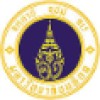
The Effects of Whole Body Vibration in People With Chronic Stroke
StrokeWhole body vibration (WBV) has been found to be useful in promoting bone health and muscle performance in older adults. To date, no study has examined the effects of different WBV frequencies on the properties of the muscle-bone unit in stroke patients. The overall aim of the proposed study is to compare the efficacy of different vibration frequencies on properties of the muscle function and bone turnover among people with chronic stroke. It is hypothesized that the higher-vibration frequency protocol will lead to significantly better outcomes related to the bone turnover and muscle function.

Utilizing Gaming Mechanics to Optimize Telerehabilitation Adherence in Persons With Stroke
StrokeThis trial studies the impact of motivational strategies designed by the gaming industry on adherence to a home tele-rehabilitation program designed to improve hand function in persons with stroke. A growing literature suggests that the extended practice of challenging hand tasks can produce measurable changes in hand function in persons with stroke. Current health care delivery systems do not support this volume of directly supervised rehabilitation, making it necessary for patients to perform a substantial amount of activity at home, unsupervised. Unfortunately, adherence to unsupervised home exercise regimens is quite poor in this population. The investigator's goal is to assess the impact of several well-established game design strategies: 1) Scaffolded increases in game difficulty 2) In-game rewards 3) Quests with enhanced narrative. The investigator's will utilize these enhancements to study their impact on motivation to perform a tele-rehabilitation- based home exercise program, adherence to the program and changes in hand function. The proposed study will utilize a system of novel rehabilitation technologies designed to facilitate home exercise performance. Subjects will perform 3 simulated rehabilitation activities supported by a passive exoskeleton, an infrared camera and software that will allow subjects to exercise at home. The investigator's will investigate: 1) Differences in measures of motivation elicited by motivationally enhanced simulations and un-enhanced control versions.2) The impact of motivational enhancements on actual adherence to a tele-rehabilitation program in persons with stroke and 3) The impact of motivational enhancement on improvements in hand function achieved by these subjects. This proposal will address a critical gap in modern rehabilitation - adherence to autonomous rehabilitation programs. Patient participation in unsupervised rehabilitation is one of the assumptions underpinning our health care system. This said, no data collected to date supports that adherence is acceptable. The technology and methodology in this proposal are an important step towards leveraging extensive research and development done by the computer gaming industry into improved rehabilitation practice.

Cortical Activity and Gait Function for Robotic Gait Training in Hemiparetic Stroke
StrokeEffects of robot-assisted gait training on cortical activity and gait function in hemiparetic stroke

Smartwatch App for Vibration Stimulation
StrokePhysical DisabilityThe objective of this study is to determine if the acute effect of vibration from a smartwatch on hand function is comparable to the effect of an existing laboratory prototype.

Hemodynamic Response and Motor Functions Following Transcranial Direct Current Stimulation in Acute...
StrokeAcuteThe aim of the present study is to evaluate the possible effect of using dual-tDCS applied before conventional physical therapy on motor functions and hemodynamic response

Effects of Priming Intermittent Theta Burst Stimulation on Upper Limb Motor Recovery After Stroke:...
StrokeThe aim of this study is to investigate the effects of intermittent theta burst stimulation primed with continous theta burst stimulation (cTBS), on top of a standard robot-assisted training (RAT) on improving the upper limb motor functions of stroke survivors and to explore potential sensorimotor neuroplasticity with electroencephalography (EEG).

Providing Sitting Balance Training With a Newly Developed Rehabilitation Device
StrokeThis clinical study is being conducted to evaluate a new training device, the T-CHAIR, for trunk rehabilitation and post-stroke balance. The investigators would like to study three objectives. First, the investigators want to examine whether training with a new training device is feasible and safe during rehabilitation in the later phase, more than six months after a stroke. The investigators also evaluate whether training with a new training device has an effect on the sitting balance and the function and strength of the trunk. Finally, the investigators examine whether training with a new training device has an effect on walking, standing and activities of daily life and self-care.

Efficacy of End-Effector Robot-Assisted Gait Training Combined With Robotic Balance Training in...
StrokeOver the last years, the introduction of robotic technologies in gait rehabilitation of stroke patients has aroused great interest. Some studies have been conducted to evaluate the effects of robot-assisted training compared to conventional gait rehabilitation in patients with subacute stroke but no studies seem to investigate the effects of a combined robotic treatment (gait plus balance). The aim of this study is to evaluate the efficacy of a combined gait and balance robotic rehabilitation compared robotic gait training alone.

Arm Boot Camp Study: Evaluation of a Program to Increase Upper Limb Recovery After Stroke
StrokeCerebral Infarction9 moreThis study will examine the feasibility and effect of a program that combines exercise and feedback from a wearable device on upper limb movement practice and function in individuals with stroke.

Mindfulness Based Stress Reduction and Post-Stroke Cognition
StrokeStroke Sequelae2 moreThe investigators don't fully understand how, regardless of the size or location in the brain, minor strokes can result in significant problems with focus, attention, and multi-tasking that prevent individuals from returning to an active lifestyle, and negatively impact quality of life; but the investigators' preliminary data using magnetoencephalography (MEG) suggest that there may be disruption of the neuronal network and abnormal frontal lobe activity in the brain after stroke. Mindfulness Based Stress Reduction (MBSR) is effective at treating frontal lobe dysfunction in the form of anxiety and depression occurring during the chronic phase of stroke recovery. The aim of this study is to use MBSR to improve other forms of frontal lobe dysfunction (cognitive outcomes) during the subacute phase of recovery, when patients are making critical decisions regarding patients' ability to return to work or live independently; and to use MEG, a tool capable of imaging brain activity and neuronal networks, to understand the brain changes that correspond to improvement after treatment.
